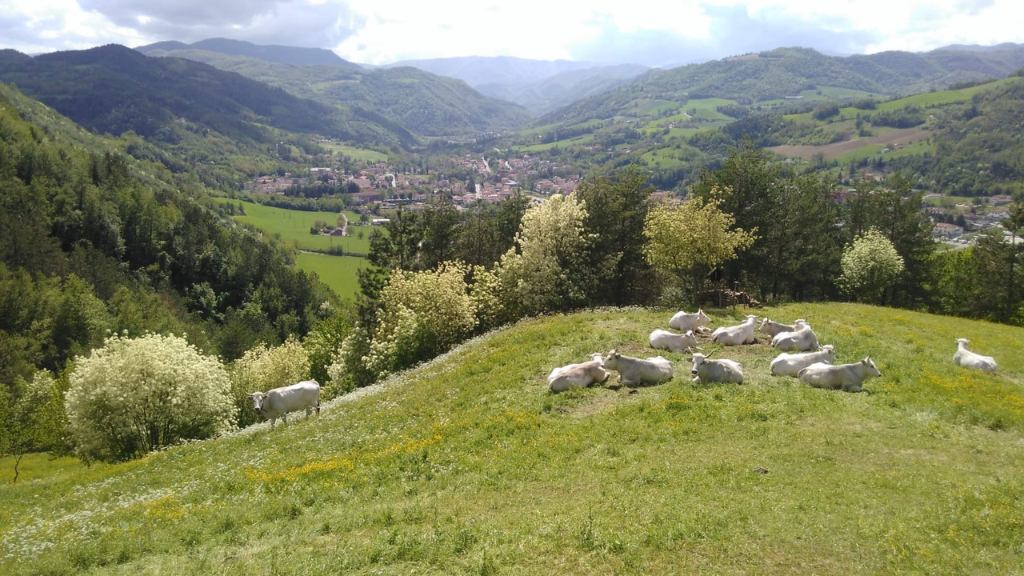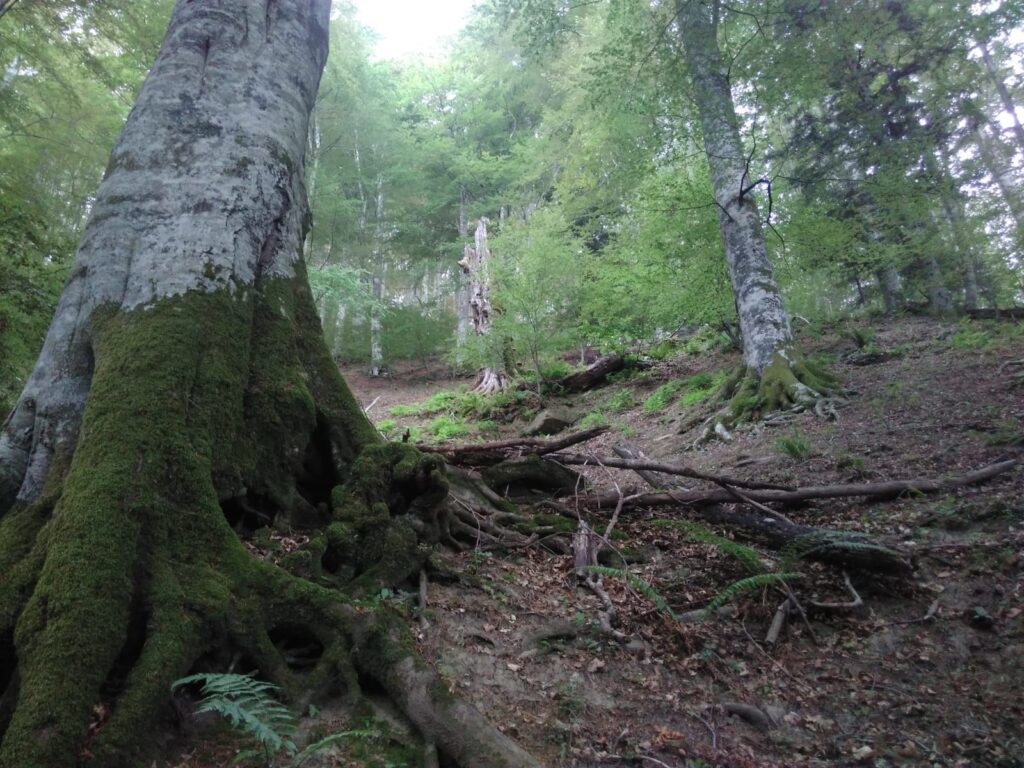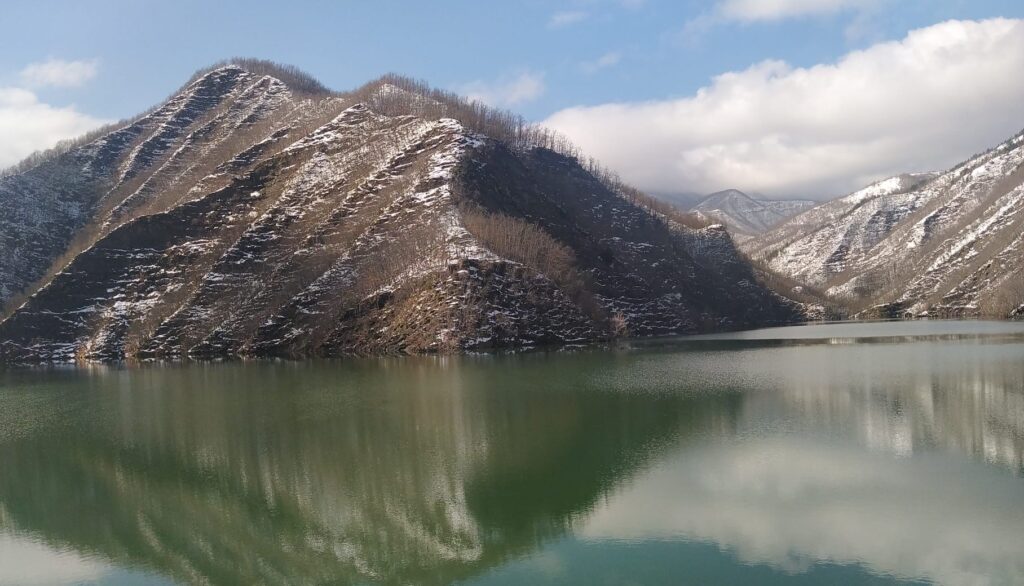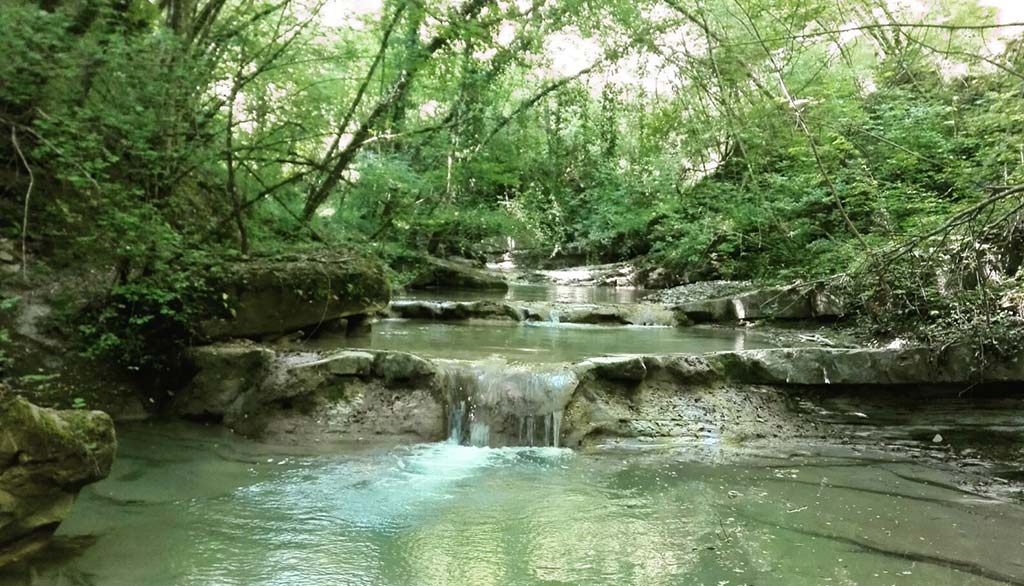The local surroundings
Santa Sofia and its hinterland

Santa Sofia isn’t one of those remote spots where you end up by chance: far from the beaten track, it’s like an island outcrop emerging from the lowlands of Tuscany, Umbria and Romagna.
Fresh and green in summer, cloaked under a snowy white mantle in winter, you can enjoy Santa Sofia all year round.
Clean air, woodland and great food make it a wonderful destination for trekking and cycling enthusiasts, where you can stroll in the woods foraging for mushrooms and truffles, bathe in the cool river, rest and relax.
Immersed in the greenery of the Casentino Forest National Park, the heart of this town is rooted in the warmth of the Romagna character, while its soul expresses a touch of Tuscan nobleness. The town proudly boasts its imposing buildings: the 17th-century Palazzo Giorgi and the fortified Palazzo Bianchini-Mortani, the Mentore Theatre (the latest work by architect Gae Aulenti) and the “Vero Stoppioni” Gallery of Contemporary Art. The latter showcases covering a spectrum ranging from neorealism to abstract art collected in the course of more than 60 editions of the Campigna Prize, as well as a section dedicated to the painter Mattia Moreni, who chose this town as his creative base. The Open-Air Sculpture Park hosts works by contemporary artists such as Pomodoro, Mainolfi, Cuoghi and Corsello, Staccioli, Hidetoshi Nagasawa, Mattiacci, Somaini, Anne and Patrick Poirier, Giulio De Mitri; their stunning pieces are harmoniously installed along the riverbank, sharing a peaceful setting with the marsh reeds, herons and the many birds that flock there and enchant the tourists.
With a 13 km car ride, you can reach Santa Sofia’s hamlet of Corniolo and visit its two beautiful churches. The neo-Gothic St. Peter’s Church houses a precious polychrome terracotta of the Della Robbia school and a beautiful mid-16th century Deposition by the Faenza painter Ponteghini.
A few hundred metres away is the small Oratory of the Madonna delle Grazie, which is home to original frescoes and paintings.
From Corniolo, it is just a few kilometres to the Valbonella Botanical Gardens, which are open from April to September with many summer initiatives for adults and children. Starting from Corniolo, we also recommend the Poggio Baldi Lake nature trail.
Spinello, another hamlet of S. Sofia, is 10 km away and is located between the Bidente, Borello and Savio Valleys at an average altitude of 850 m. From the summit of the Monte Aiola (942 m above sea level), you can admire sweeping views of the Romagna countryside as far as the Adriatic Sea and the Tuscan-Romagna and Marche Apennine chain.
Link: Information on Events and Accommodation | Santa Sofia Tourist Office (visitsantasofia.it)
The Campigna forest and its ancient beech groves

This beating heart of the Casentino Forests National Park is one of Europe’s most treasured forest areas and spans both the Romagna and Tuscany regions; it was designated a UNESCO World Heritage Site in 2017 precisely because of its beauty and unique character.
Green and fresh in summer and snow-covered white in winter, it is the starting point for enchanting trekking itineraries on foot but also with bicycles or horses. During the winter, you can indulge in cross-country or downhill skiing and skiing and mountaineering, or you can enjoy beautiful snowshoe hikes in the forest with its enchanted atmosphere.
Snow lovers can thus enjoy a variety of sports without tedious queues at the lifts.
The National Park’s website contains ample descriptions of its history and territory spanning 36,000 hectares, with plenty of helpful information about this vast area for tourists and nature lovers alike.
Here is the link: Foreste Casentinesi National Park (parcoforestecasentinesi.it)
Hermitage of Camaldoli: the sixteenth-century monastery
At Camaldoli, you can visit two fascinating religious sites immersed in the forest: The Sacred Hermitage and Monastery. Both are expressions of the monastic order of St. Romualdo, founder of the Camaldolese order in the 11th century, whose rules require, in one interpretation, total isolation (the function of the Hermitage) and, in the other, the monastic life of the Benedictine order (Monastery).
Particularly picturesque in winter, these two sites are definitely not to be missed, including the Ancient Pharmacy run by the monks with distinctive products reminiscent of a fascinating past.
More detailed info is available at http://www.camaldoli.it/
Ridracoli Dam

This artificial reservoir was constructed in the 1980s to provide water to over 47 municipalities in Romagna. It is located in the picturesque Casentino Forest National Park and attracts many tourists every year who come to enjoy outdoor activities like trekking, photography, canoeing, cycling, and nature.
The combination of engineering and nature creates a harmonious atmosphere that captivates visitors.
The reservoir offers a broad range of activities; for more information, see the link: Hydro- and Eco-museum of the Waters of Ridracoli (ecomuseoridracoli.it)
Bagno di Romagna

This small town is located just 20 km from Santa Sofia and is rich in thermal spring waters that were already well-known to the ancient Romans.
Great food, relaxation and nature are the hallmarks of this small town in the Romagna-Tuscany hinterland; high in our list of must-see attractions are the historic centre with the Palazzo del Capitano and the Basilica of Santa Maria Assunta, as well as the health-inducing hot springs that you can enjoy in the spa facilities.
Here is the link for more information:
Bagno di Romagna Tourist Information website – Savio Valley Tourist Information Website (bagnodiromagnaturismo.it)
Galeata
Rich in history and typical Tuscan architecture, the Abbey of Sant’Ellero is definitely worth a visit. All that remains today is the Romanesque-style church and the early medieval sarcophagus of the saint (8th-9th century AD).
Nearby, you should visit Pianetto, a charming hamlet centred on the 15th-century church of Santa Maria dei Miracoli and the beautiful bell tower believed to have been built by the Florentine architect Bartolomeo Ammannati.
Next door is the Monsignor Domenico Mambrini Municipal Museum which exhibits major archaeological collections featuring pre-Roman and Roman artefacts found in excavations at Theodoric’s Villa, Pantano and Mevaniola, an ancient Roman settlement just a few hundred metres from the museum.
